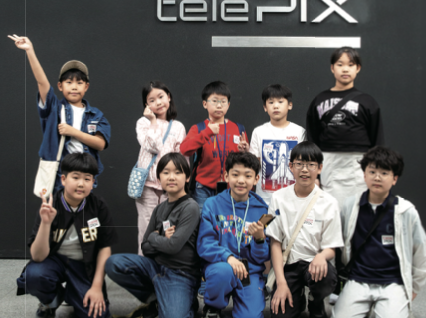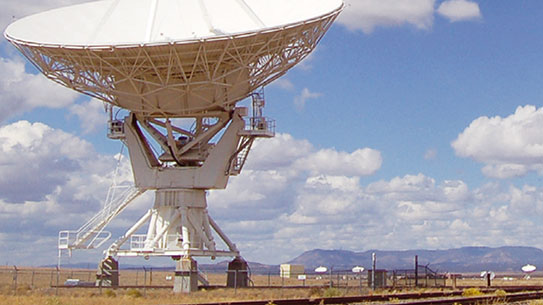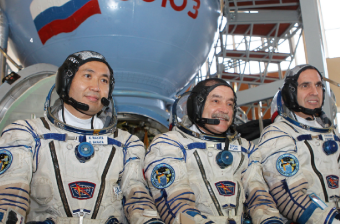샌프란시스코 주립대학교의 찰스 시블리씨는 침팬지가 고릴라와의 관계보다 우리 인간과 더욱 가깝다고 주장한다. 그는 그의 새로운 연구결과에서 우리와 우리의 영장류 사촌과의 차이는 과거 믿어왔던 것보다 훨씬 적다고 지적한다.
이러한 주장은 우리가 항상 그 모든 다른 생명체들과 다르다고 생각했던 까닭에 놀랄만한 것이다. 사실 우리는 털이 없고 꼬리도 없으며 두다리로 걷고 생각할 줄 알고 또한 많은 사람들이 믿는 것처럼 불멸의 '영혼'을 가지고 있다. 따라서 우리는 다른 모든 생명체들과는 떨어져 분리된 상태로 존재한다고 생각해왔다.
진화론이 점차 수용되고 사람들이 인간은 '하등동물'로부터 발전되어왔다고 이해하기 시작했지만 우리는 인간과 그러한 하등동물들 사이에는 큰 차이가 있다고 확신했던 듯하다.
예를 들어 원숭이가 인간과 매우 닮았다는 점에는 의심의 여지가 없다. 원숭이의 네 종류중 기번원숭이와 오랑우탄은 상대적으로 사람과 차이가 큰것으로 보여지나 고릴라와 침팬지는 우리의 사촌쯤 되는것으로 여겨진다.
지난 1960년대까지만 해도 고릴라와 침팬지는 서로 닮았지만 이들이 인간과는 다르다는 점을 당연시했다. 그래서 우리는 분단의 벽을 사이에 두고 사촌격인 고릴라나 침팬지와는 다른 쪽에 서 있었다.
그러나 지난 1960년대초 웨인주립대학교의 모리스 굿맨씨는 세 종류의 동물이 가진 혈액이 어떻게 교차반응하는지를 비교하였다. 특정동물의 피는 같진 않되 비슷한 동물에 큰 반응을 일으키지만 관련성이 약한 동물엔 그 반응도가 저하된다.
그는 그 자신도 놀랄만큼 침팬지의 피가 고릴라의 피보다 사람의 피에 더욱 큰 교차반응을 나타낸다는 것을 발견했다. 이 발견은 어쩌면 침팬지와 인간이 함께 분단의 벽 한쪽에 서서 고릴라와는 분리되어 있다고 볼 수있는 첫번째 신호가 되었다.
물론 많은 생물학자들은 이 교차반응 결과를 받아들이기를 꺼려하면서 과거의 믿음을 유지하였다. 그러나 그들은 서서히 실제 유전자를 분석하는 법을 깨닫기 시작했다.
유전자는 세포의 화학작용을 조절하는데, 각 동물류는 고유의 유전자를 갖는다. 한편, 진화론적으로 말하자면, 두 동물류의 관계가 밀접할수록 유전자는 더 많은 공통점을 갖는다.
지난 1984년 예일대학교에서 존 알퀴스트씨와 함께 연구하던 시블리씨는 한 동물의 유전자 서열을 검출하여 다른 동물의 유전자에 어떻게 반응하는지를 시험하였다. 두 동물의 관계가 밀접할수록 유전자서열은 유사하며 서로 강하게 결합한다.
이 연구결과에서도 역시 침팬지의 유전자순서는 고릴라보다는 인간의 것에 근접해 있다는 사실이 밝혀졌다.
그러나 이러한 사실은 쉽게 받아들여지지 않았다. 이러한 유의 유전자 연구방법은 까다롭고 또 잘못된 결과를 낳기 쉽다. 아닌게 아니라 예일대학교의 조나단 마크씨는 시블리씨의 결과를 부정하였고 심지어는 그의 연구자료가 거짓으로 꾸며졌다는 식의 의사를 표명하기도 했다.
그러던 중 유전자 사슬을 식별하고 그 구조를 보여주는 것이 가능하게 됐다. 더 이상 두 유전자가 서로 어떻게 반응하는지를 연구해 볼 필요성이 없게됐다. 생명체로부터 유전자의 표본만 얻어 그것이 갖는 뉴클레오티드의(구조를 갖춘 유전인자를 구성하는 요소들) 본질만 보여주면 되는 것이다.
이와 같은 실험이 인간의 유전자, 그리고 침팬지와 고릴라 유전자의 똑같은 부분에 실시됐다. 그 결과 그 특정 부분에서의 인간과 침팬지의 차이는 1.6%임이 밝혀졌다. 똑같은 부분에 있어 고릴라와 침팬지는 2.1%의 차이가 있었다. 다른 연구들도 마찬가지의 결과를 제시하였다.
1990년도 후반에 작성된 최근의 자료는 - 에너지 형성을 통제하는 세포속의 조그마한 구조물인 - 미토콘드리아를 다룬 것으로, 미토콘드리아는 유전자를 담고 있다. 메리엘렌 루볼로씨가 이끄는 하버드대학의 연구팀은 산화시토크롬이라 불리는 효소의 생산과정을 관장하는 미토콘드리아로부터 7백개의 유전자 범위를 조사했다. 이 연구팀은 침팬지와 고릴라의 똑같은 부분을 연구했는데 침팬지와 인간과의 차이는 9.6%, 침팬지와 고릴라의 차이는 13.1%임을 발견했다.
점점 사람들은 거대한 만(灣)건너엔 다른 원숭이류(그리고 물론 다른 생명체들도)를 둔채, 반대로 침팬지와 인간이 함께 그 만의 다른 편에 놓여있음을 믿게 됐다.
그러나 침팬지가 우리의 유전인자와 그토록 유사하다면 왜 서로는 그리도 다를까? 다름아니라, 인간의 전체 유전정보량은 두꺼운 백과사전 1천여권과 같다. 침팬지가 인간과 1%만 다를지라도 이는 우리의 것과 비교하여 다른 정보가 10여권의 백과사전 분량에 해당한다는 뜻이 된다. 이 정도라면 침팬지를 인간으로부터 다른 종으로 만들기에 충분한 것이다.
Chimpanzees are more closely related to us than they are to gorillas, asserts Charles Sibley of San Francisco State University, who points to new research that indicates a more narrow gap between us and our primate cousins than previously believed.
This is surprising because we have always thought that we were separate from all other life forms. After all, we are hairless, have no tails, walk on two legs, can reason, and, many believe, have an immortal 'soul.' Therefore, here we are, set apart from all other living beings on the other side of a grand divide.
Even as the tenets of evolution came to be more and more accepted, and people began to understand that human beings developed from "lower animals," it still seemed certain that there was a great gap between human beings and those lower animals.
For instance, there is no question that the apes show considerable resemblance to human beings. Of the four kinds of apes, the gibbon and the orangutan appear relatively far removed from us, but the gorilla and the chimpanzee seem to be our cousins of sorts.
Nevertheless, until the 1960s, it was taken for granted that the gorillas and chimpanzees resembled each other closely and that both of them were considerably different from human beings. So there we were, on one side of the divide, while gorillas and chimpanzees, our closest relatives, were on the other.
But then in the early '60s, Morris Goodman, of Wayne State University, compared the blood proteins of the three kinds of animals to see how they crossreacted. Blood from a particular animal would react strongly with a different, but similar animal, and less strongly with one that was less related.
He found to his surprise that chimpanzee blood crossreacted with human blood more strongly than it did with gorilla blood. This was the first indication that perhaps chimpanzees and human beings were on one side of the divide while gorillas were on the other.
Of course, many biologists were reluctant to accept crossreaction data, and they remained with the old system. However, biologists slowly learned how to analyze for actual genes.
Genes control the chemistry of a cell, and animal species has its own set of genes. However, the more closely related two species are, evolutionally speaking, the more genes they share in common.
In 1984, Sibley, working at Yale University with Jon Ahlquist, took gene sequences from one animal and tested its reaction with those of another. The more closely related the two animals were, the more similar were its gene sequences and the more strongly would those gene sequences combine with each other.
Again, the result was that the chimpanzee genesequences were closer to those of the human being than they were to the gorilla.
This was not accepted easily. This sort of gene sequence technique was tricky and it might easily have gone awry. Indeed, Jonathan Marks, of Yale, strongly objected to Sibley's results and even went so far as to imply that Sibley had falsified his data.
But then it became possible to identify strings of genes and show what their structure was. It was no longer necessary to study the manner in which two genesequences reacted with each other. All one had to do was to obtain a sample of genes from one species and show the nature of their nucleotides (the building blocks out of which they are constructed).
This was done for a section of human genes, and then for the same section of chimpanzee genes and gorilla genes. It turned out that there was a 1.6 percent difference between human beings and chimpanzees in that particular section. The difference between gorillas and chimpanzees, in the same section, was 2.1 percent. Other studies showed the same result.
The most recent data, produced in late 1990, dealt with mitochondria - little structures in the cell that control the formation of energy - which contain genes. A team led by Maryellen Ruvolo, of Harvard University, studied a 700-gene stretch from mitochondria, a stretch that oversaw the production of an enzyme called cytochrome oxidase. They studied the same gene section from chimpanzees and gorillas, and found a 9.6 percent difference between chimpanzees and human beings, but a 13.1 percent difference between chimpanzees and gorillas.
More and more, people are beginning to believe that chimpanzees and human beings are on one side of a great gulf, while the other apes (and, of course, other forms of life) are on the other side.
But if chimpanzees share so many of their genes with us, why are they so different? Well, the total gene information in the human body is equal to a thousand volumes of a large encyclopedia. If the chimpanzee only differs by 1 percent, that means there are still 10 volumes of the encyclopedia that are different for them as compared with us. That is enough to make them a different species.
(c)1991.Los Angeles Times Syndicate.
이 기사의 내용이 궁금하신가요?
기사 전문을 보시려면500(500원)이 필요합니다.
1991년 05월 과학동아 정보
🎓️ 진로 추천
- 생명과학·생명공학
- 지구과학
- 천문학

















